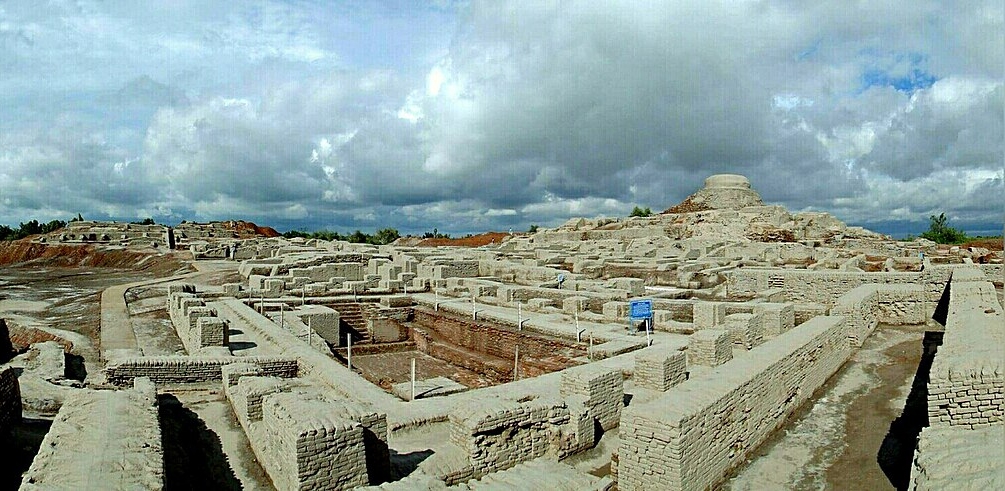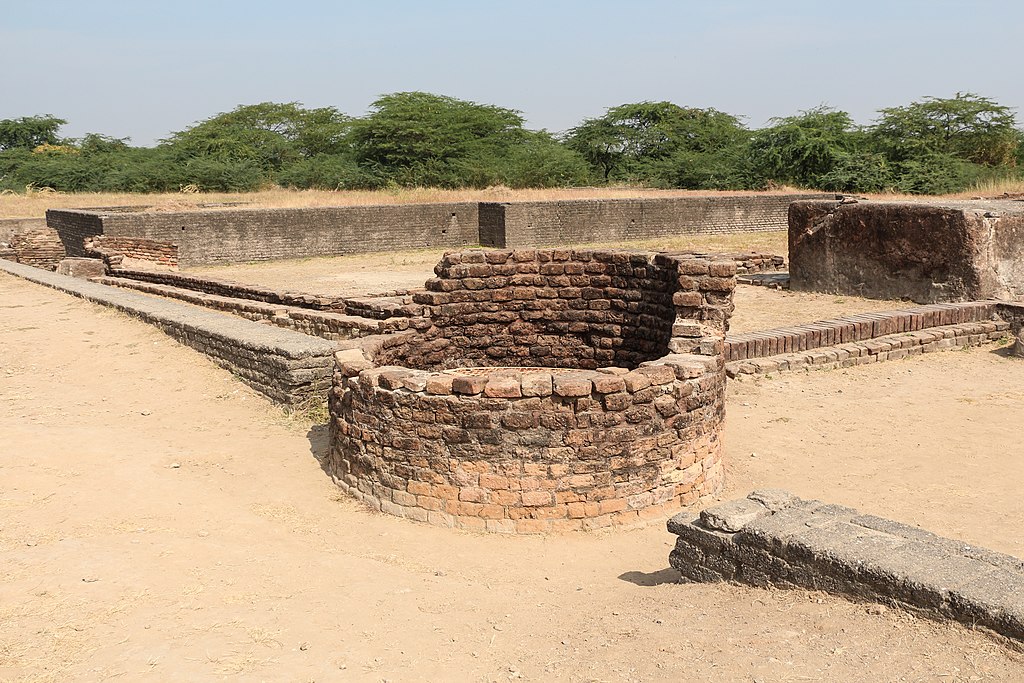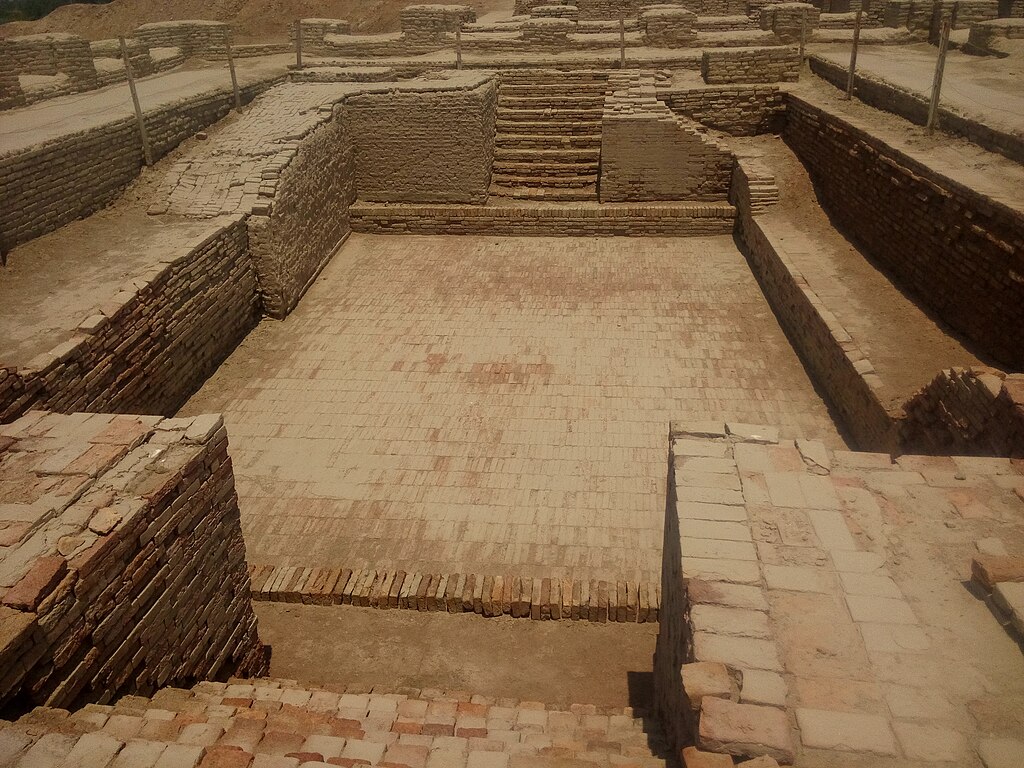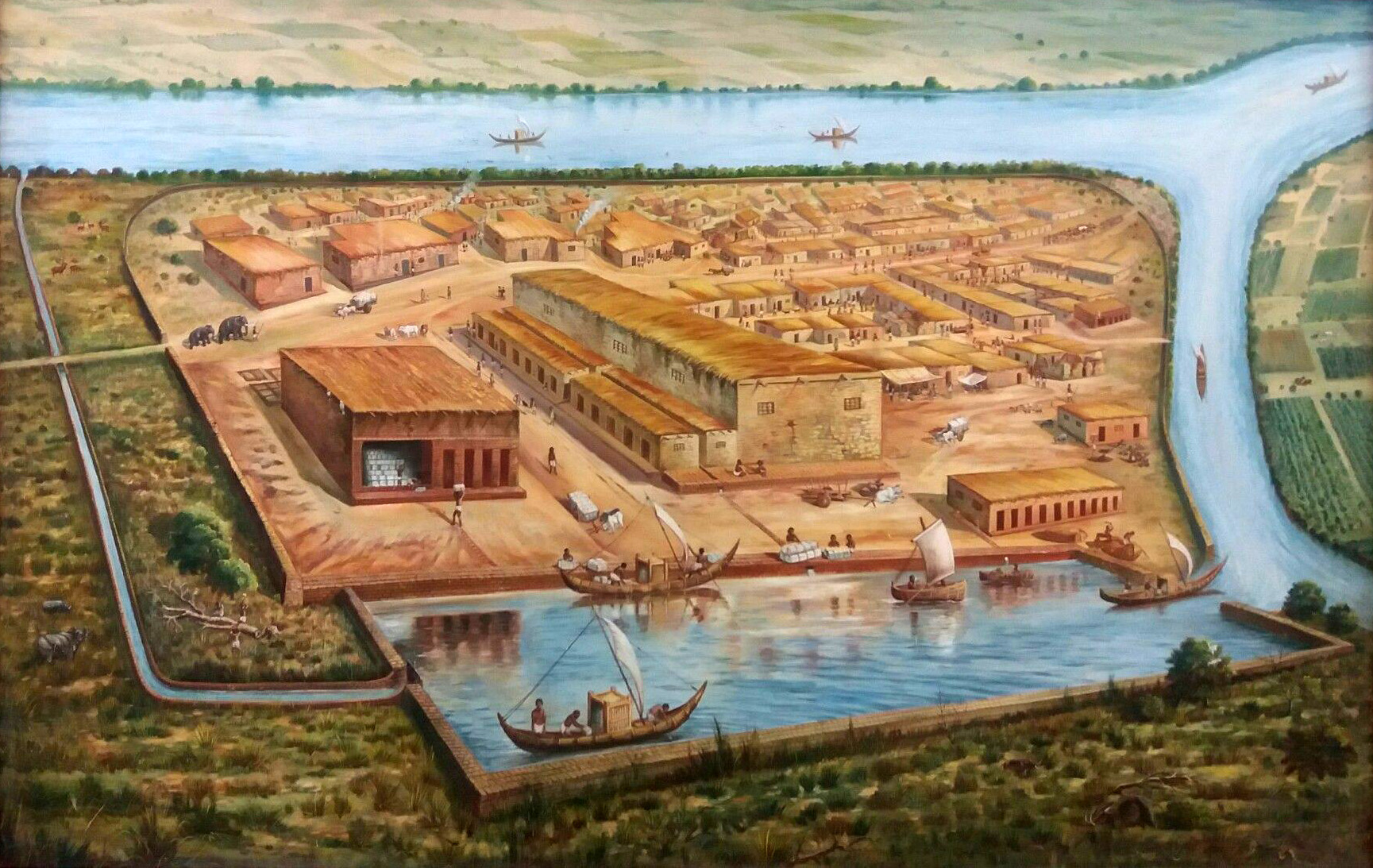Harappa, Mohenjo-daro and the other outstanding cities of the Indus Civilisation flourished between 2600 and 1900 BCE. None of them can be regarded as the capital of the whole civilization, rather as economic and political centers of their region, in alliance with each other.

In the alluvial plains, irrigated by rivers, where clay is available, cities were built of burnt or sun-dried clay bricks. Burnt brick was more durable and more resistant to water and environmental influences. In areas rich in stone, such as Gujarat, cities were built of stone blocks cut into brick shapes. These walls were the most resistant.

Each city had a well-functioning network of canals, which was a unique feature of the Indus civilisation. The city dwellers obtained fresh water from wells, and, after using the water in the houses’ bathroom area, it was channeled away. For the smooth operation of the drainage system precise planning of the city was necessary, and for keeping the drains clean, the cooperation of the residents.

The Indus cities had no monumental buildings, no temple or palace has yet been identified. However, the cities had many unique features, the most famous of which is the Great Bath excavated in Mohenjo-daro. Water and ritual baths were extremely important in the lives of the city dwellers, as evidenced by the seven hundred wells identified in Mohenjo-daro.

Source of images:
1: https://commons.wikimedia.org/wiki/File:Great_bath_-_Mohenjo-daro.jpg
2: https://elements.envato.com/
3: https://commons.wikimedia.org/wiki/File:Lothal_-_ancient_well.jpg
4: https://commons.wikimedia.org/wiki/File:Great_Bath,_Mohenjo-daro_20160806_JYN-03.jpg

